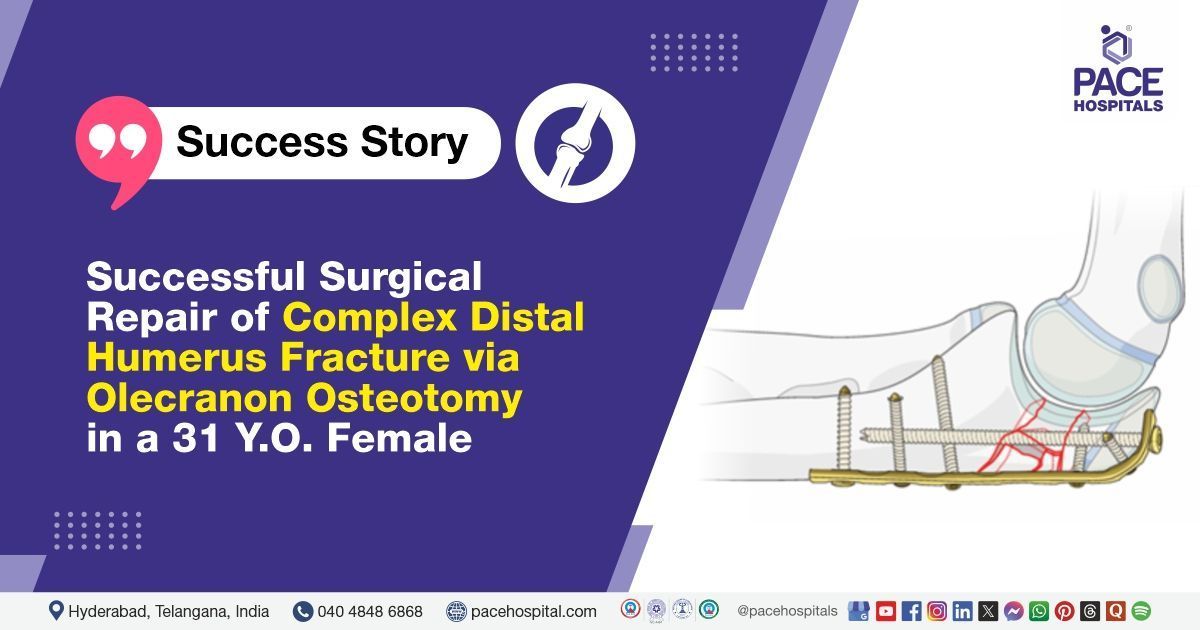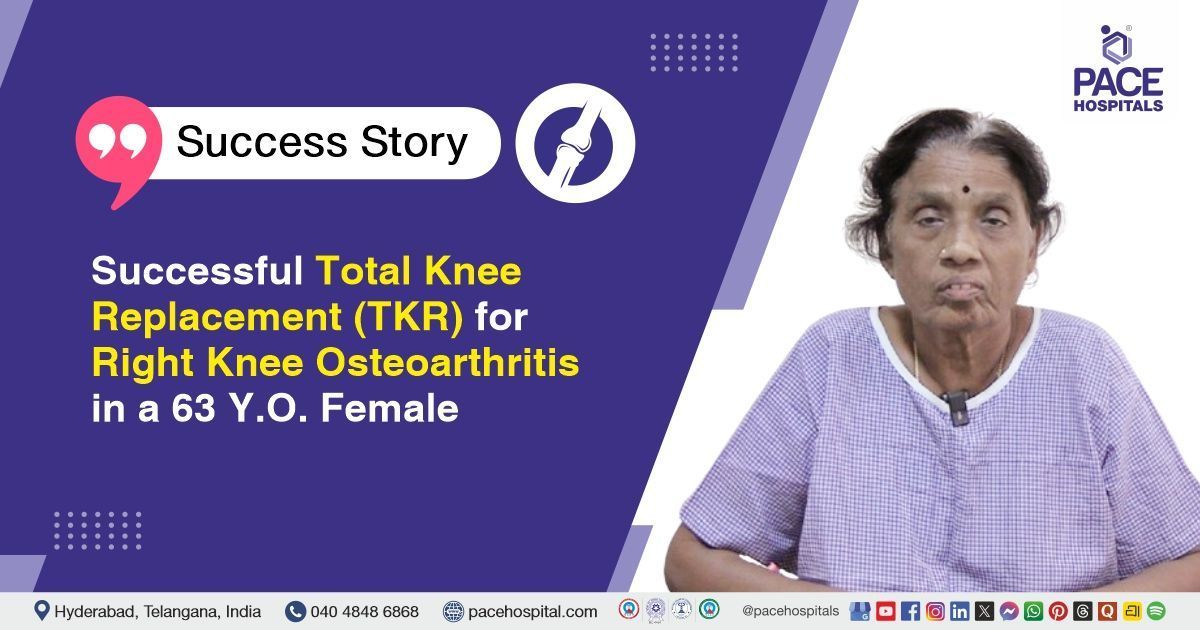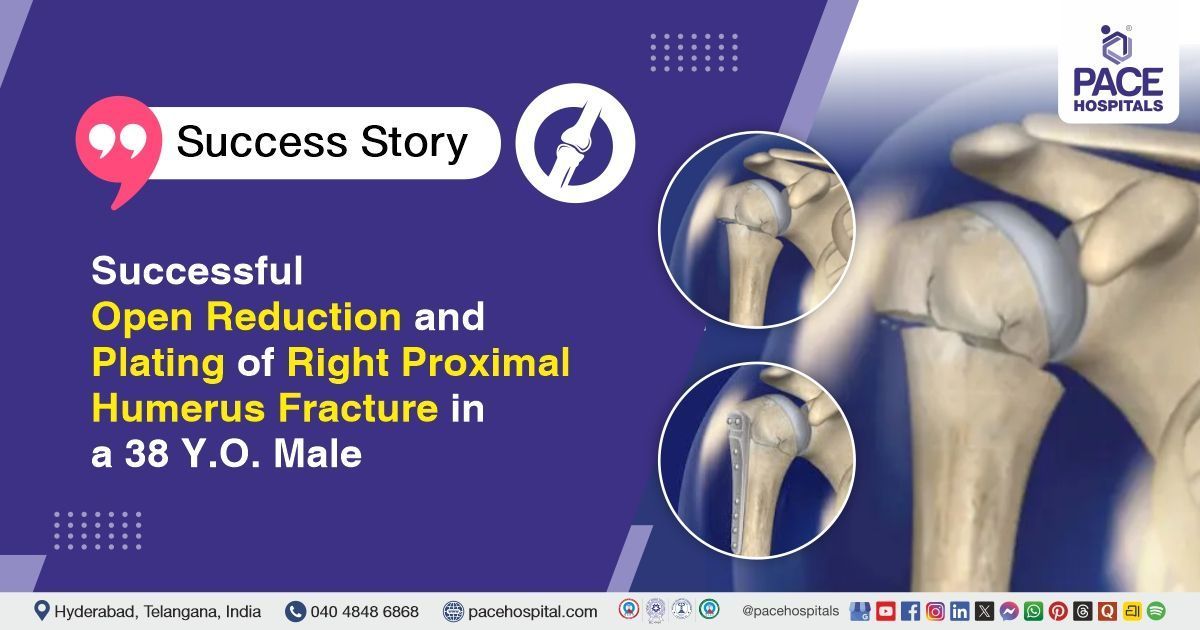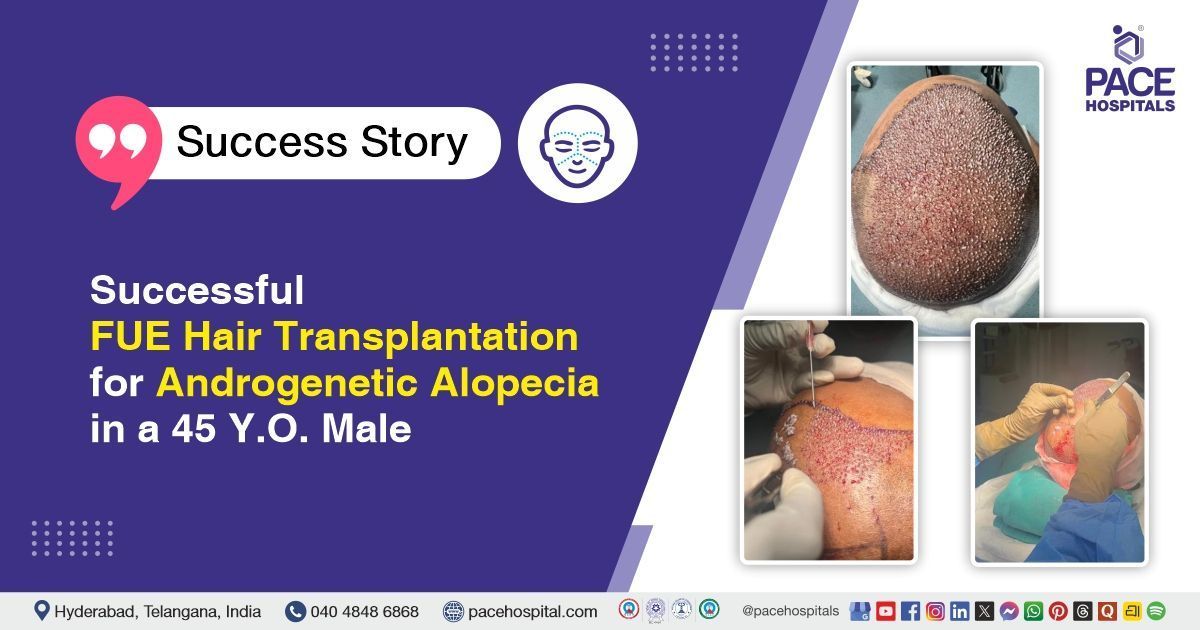Successful Repair of Distal Humerus Fracture using Olecranon Osteotomy in 31 Y.O. Female
PACE Hospitals
A team of orthopedic doctor and surgeon in Hyderabad at PACE Hospitals successfully performed an ORIF with Olecranon Osteotomy and Fixation to treat a complex fracture of the distal humerus and ulna, aiming to restore elbow stability and function in a 31-year-old female patient. The procedure was undertaken following a post-traumatic fracture involving the distal end of the left humerus, classified as an OTA Type C3.
Chief Complaints
A 31-year-old female patient visited the Orthopaedic Department at
PACE Hospitals, Hitech City, Hyderabad, with complaints of pain in the left elbow and difficulty moving the joint. These symptoms indicated a potential musculoskeletal injury.
Medical History
Getting into more detail, it was revealed that the patient fell on her left elbow after slipping down the stairs at home. Additionally, there is no history suggestive of known drug allergies or pre-existing chronic illnesses.
On Examination
Upon admission to PACE Hospitals, the patient's vital signs were stable. A local examination revealed swelling over the left elbow, along with palpable crepitus (a crackling or grating sensation felt when pressing on a joint or bone, often due to broken bone fragments rubbing together) and visible deformity.
There was significant tenderness at the distal end of the humerus near the elbow joint, and the range of motion was severely limited and painful. No signs of distal neurovascular deficits were noted.
Diagnosis
After being admitted to PACE Hospitals, the doctors carefully reviewed the patient's medical history and performed a thorough examination. They diagnosed her with a post-traumatic fracture of the lower part of her left upper arm (humerus), which is classified as OTA Type C3.
This kind of fracture is very complex, with the bone broken into several pieces inside the elbow joint. It usually happens due to a strong impact or accident, such as a fall or a car crash. An OTA Type C3 fracture means the bone and the joint are severely damaged, with many broken pieces. To fix this, the patient typically needs major surgery, such as an olecranon osteotomy approach followed by open reduction and internal fixation (ORIF) in Hyderabad at PACE Hospitals, to put the bones back in place and help the elbow heal properly.
Medical Decision Making
Considering the patient's pain in the left elbow and difficulty moving the joint, along with the diagnosis of a post-traumatic fracture involving the distal end of the left humerus, classified as OTA Type C3, surgical intervention was deemed necessary.
After a detailed discussion with the patient’s guardians and obtaining informed consent, Dr. Anand V Agroya, Consultant Orthopedic Surgeon, proceeded with restoring stability through Open Reduction and Internal Fixation (ORIF) with Olecranon Osteotomy for a Distal Humerus Fracture (OTA Type C3), delivering advanced elbow fracture treatment in Hyderabad, India.
Surgical Procedure
Following a detailed assessment, pre-anaesthetic check-up (PAC), and discussion with her family about her condition and the need for surgery, she underwent open reduction and internal fixation (ORIF) using Titanium Recon plates and screws under general anaesthesia.
- Open Reduction: The bone fragments were carefully realigned to their original position.
- Internal Fixation: Titanium Recon plates and screws were used to hold the bones firmly in place.
The surgery began with a special technique called olecranon osteotomy, where the tip of the elbow bone (olecranon) was temporarily cut to allow the surgeons to clearly see and access the severely broken lower part of the upper arm bone (distal humerus).
To fix the broken pieces, titanium plates were attached on both sides of the humerus to hold it firmly in place, and a headless titanium screw was used to secure a part of the elbow joint called the trochlea.
Since the break also affected the ulna (the other bone in the forearm), the team used a method called tension band wiring along with a cancellous screw to fix that part.
The goal of this detailed and careful surgery was to realign the broken bones, stabilize the elbow, and help it heal properly, so the patient could eventually regain normal movement and strength in her arm.
Intraoperative findings
The patient had a Type C3 OTA fracture, involving multiple shattered bone fragments and severe comminution, along with a thin humeral bone structure. This made the surgical fixation particularly challenging due to limited bone strength and reduced stability for securing the implants. The surgery went smoothly without any complications.
Post-operative care
The postoperative period was uneventful. After surgery, she was shifted to the ICU for monitoring. On the first day after surgery, the patient’s wound was healthy with no signs of infection or discharge. She developed a mild fever, which was managed with intravenous medications. An X-ray confirmed proper bone alignment and well-positioned surgical implants. A second episode of fever on the following day was suspected to be a normal post-surgical inflammatory response, and a general physician recommended conservative treatment.
Medications Advised at the stay
During her hospital stay, the patient was prescribed antibiotics, pain relievers, and supportive medications. In response to the postoperative fever, she was referred to a general physician for conservative treatment, including close monitoring, supportive care, and symptomatic management, as there were no signs of infection or other complications at the surgical site.
Discharge Notes
The patient was discharged in a hemodynamically stable condition.
Discharge Medications
Upon discharge, the patient was prescribed antibiotics, proton pump inhibitors (PPIs), and urinary alkalinizers.
Advice on Discharge
The patient was advised to continue using the above-elbow slab and arm pouch until further instructions were given and to keep the plaster dry.
She was encouraged to perform active finger movements with the left hand to maintain mobility. The patient was also advised to seek immediate medical attention if she experience fever, wound discharge, or any signs of infection or complications.
Emergency Care
The patient was informed to contact the Emergency ward at PACE Hospitals in case of any emergency or development of symptoms like fever, abdominal pain, or vomiting.
Review notes
The patient was advised to return for a follow-up dressing five days after discharge, under the care of Dr. Anand Agroya.
Olecranon Osteotomy for Improved Fixation of Complex Distal Humerus and Ulna Fractures
Olecranon osteotomy is a common technique used to get a clear view of the articular (joint) surface when treating complex distal humeral fractures. Fixing complex fractures at the end of the upper arm (distal humerus) is difficult because it's hard to see the joint clearly. This makes it challenging to properly align the joint surfaces. To solve this, the orthopedic doctor or surgeon use different techniques, such as lifting the muscles and tendons around the elbow. While keeping the olecranon (the bony tip of the elbow) intact is usually preferred, sometimes doctors need to cut the olecranon (called an olecranon osteotomy) to get a better view of the joint. This approach helps doctors see and fix the joint surface more effectively than other methods. After the cut, the bone is usually fixed back in place using tension-band wiring or plates. The way the olecranon is cut can vary, and it can be done in different shapes: chevron, transverse, or oblique.
Share on
Request an appointment
Fill in the appointment form or call us instantly to book a confirmed appointment with our super specialist at 04048486868











